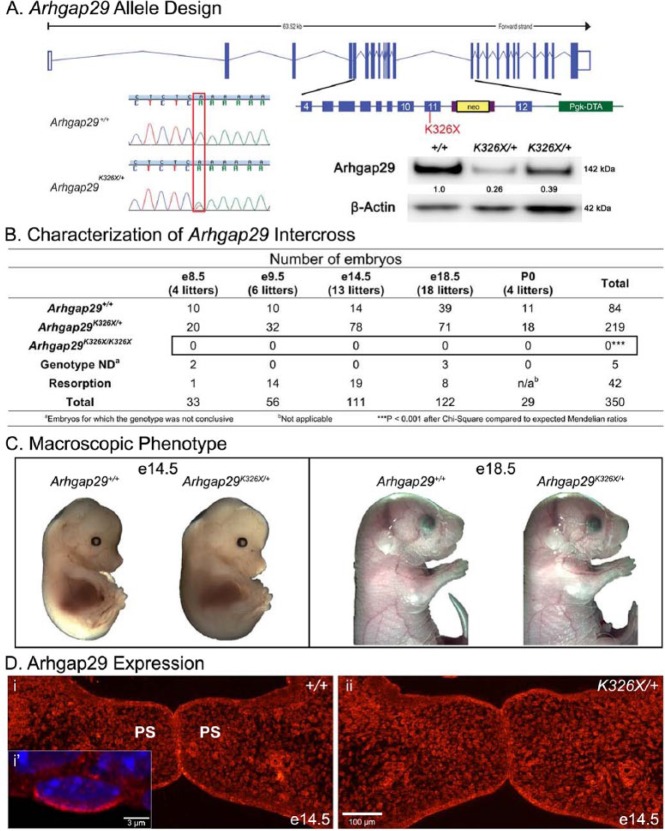Figure 1.
Characterization of the Arhgap29K326X allele. (A) A single A to T point mutation at position 1184 in exon 11 identified in a human nonsyndromic cleft lip and/or palate patient was engineered into the murine Arhgap29, resulting in protein translation to a premature stop codon K326X. (A, inset) Western blot experiments on P4 palatal mucosa protein extracts for Arhgap29 and beta-actin. Quantification of the signal is indicated by numbers between the bands, which represent ratios of wild-type levels after normalization for actin. Note the decrease in Arhgap29 protein levels in Arhgap29K326X/+ compared with wild type. (B) Resulting Arhgap29K326X/+ mice were intercrossed and their embryos harvested at various time points. No Arhgap29K326X/K326X were found at any time point even as early as embryonic day (e) 8.5. (C) The macroscopic phenotypes of wild-type and Arhgap29K326X/+ embryos have no noticeable difference. (D) Immunofluorescent staining for Arhgap29 (red) in the palatal shelves of wild-type (i) and Arhgap29K326X/+ (ii) e14.5 embryos. (D, i′) Arhgap29 expression in the periderm (p63-negative cell on apical surface of oral epithelium).

